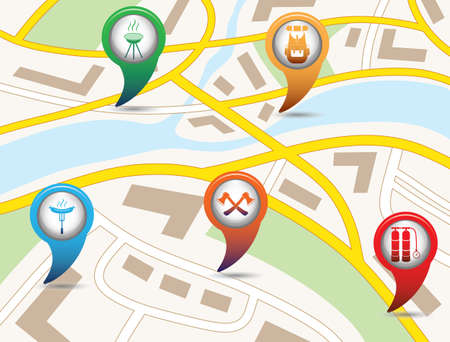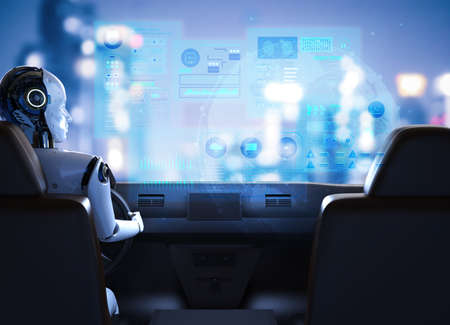1. Introduction to Modern Infotainment Systems
Infotainment systems have come a long way from the days of basic radio and CD players. Today, they serve as the central hub for communication, entertainment, and navigation in modern vehicles. With advancements in technology, these systems integrate features like touchscreens, voice commands, real-time GPS, and internet connectivity, enhancing the overall driving experience.
The Evolution of Infotainment Systems
Early car infotainment systems were simple radio units with physical buttons, offering minimal interaction. Over time, technological innovations introduced digital displays, touchscreen controls, and smartphone integration, revolutionizing how drivers interact with their vehicles.
| Era | Features |
|---|---|
| 1980s – 1990s | AM/FM radio, cassette/CD players |
| 2000s | Basic GPS, AUX inputs, digital displays |
| 2010s – Present | Touchscreens, voice control, smartphone connectivity, AI-powered navigation |
The Role of Infotainment Systems in Navigation
One of the most significant roles of modern infotainment systems is enhancing navigation capabilities. With built-in GPS, real-time traffic updates, and turn-by-turn voice guidance, drivers can reach their destinations more efficiently. Additionally, smartphone integration through Apple CarPlay and Android Auto allows access to popular navigation apps like Google Maps and Waze.
Key Navigation Features
- Real-Time Traffic Updates: Infotainment systems provide live traffic data, helping drivers avoid congestion.
- Voice-Guided Directions: Hands-free navigation ensures a safer driving experience.
- 3D Mapping & Landmarks: Advanced displays offer detailed maps for easier route planning.
- Offline Navigation: Some systems allow users to download maps for areas with poor connectivity.
How GPS Technology Has Improved
Modern infotainment systems now utilize satellite data combined with internet-based location services to offer more accurate positioning. AI-driven suggestions also help drivers find faster routes based on real-time conditions, making navigation smarter and more adaptive than ever before.
2. Seamless Integration with GPS and Real-Time Mapping
Modern infotainment systems are designed to work seamlessly with GPS technology, offering drivers a more intuitive and efficient navigation experience. These systems utilize advanced mapping software that provides real-time traffic updates, route optimization, and dynamic mapping to help drivers reach their destinations faster and more efficiently.
Real-Time Traffic Updates
Infotainment systems leverage live traffic data to provide real-time updates on road conditions. By integrating GPS with cloud-based traffic monitoring, drivers can receive instant alerts on congestion, accidents, construction zones, and other road hazards. This feature helps motorists make informed decisions and avoid delays.
Route Optimization
Advanced algorithms analyze traffic patterns and suggest alternative routes to save time and reduce fuel consumption. Infotainment systems consider multiple factors, such as current traffic conditions, weather, and road closures, to recommend the fastest and most efficient paths. Below is a comparison of traditional GPS navigation versus infotainment-based route optimization:
| Feature | Traditional GPS Navigation | Infotainment-Based Navigation |
|---|---|---|
| Traffic Updates | Limited or delayed | Real-time and continuously updated |
| Route Adjustments | Basic rerouting | Smart, AI-driven route optimization |
| Weather Considerations | Not considered | Integrated with weather updates |
| Connectivity | Standalone device | Cloud-connected and interactive |
Dynamic Mapping
Unlike static maps that require manual updates, infotainment systems feature dynamic mapping that updates automatically. This functionality ensures that drivers always have the latest road layouts, new street names, and updated points of interest. Some systems also incorporate augmented reality (AR) navigation, providing a more immersive and accurate driving experience.
Conclusion
With seamless GPS integration, real-time traffic monitoring, and intelligent route adjustments, modern infotainment systems significantly improve navigation efficiency. These innovations make driving more convenient and ensure a safer and smoother journey for all motorists.

3. Voice Commands and AI Assistance in Navigation
Modern infotainment systems are making navigation more convenient and safer by integrating voice commands and AI-powered assistants. These features allow drivers to interact with GPS and navigation tools without taking their hands off the wheel or their eyes off the road.
Enhancing Hands-Free Navigation
Voice command technology has evolved significantly, allowing drivers to simply speak their destination rather than manually inputting addresses. AI assistants can also interpret natural language, making it easier to find locations, adjust routes, and get real-time traffic updates effortlessly.
Key Benefits of Voice Commands in Navigation
| Feature | Benefit |
|---|---|
| Hands-Free Control | Reduces distractions by allowing drivers to use voice commands instead of touchscreens. |
| Real-Time Traffic Updates | AI assistants provide live traffic data and suggest alternate routes. |
| Easy Destination Input | Drivers can speak addresses naturally instead of typing them, improving convenience. |
| Intelligent Route Adjustments | Navigation systems can reroute based on voice feedback or unexpected road conditions. |
AI-Powered Personal Assistants for Smarter Navigation
AI-driven assistants, such as Apple CarPlay’s Siri, Google Assistant, and Amazon Alexa, are transforming how drivers interact with navigation. These assistants not only provide directions but can also suggest nearby restaurants, gas stations, or landmarks based on user preferences.
How AI Enhances Driver Convenience
- Context-Aware Recommendations: AI learns from driver habits and suggests destinations based on past trips.
- Better Voice Recognition: Advanced AI improves accuracy, allowing more natural speech patterns.
- Multi-Tasking Features: AI assists in navigation while also handling calls, messages, and music without driver distraction.
Future of AI and Voice Navigation
As AI technology continues to evolve, future infotainment systems will become even more intuitive. Predictive destination suggestions, real-time traffic predictions, and deeper integration with smart home devices are just some of the enhancements on the horizon.
4. Connectivity and Over-the-Air Updates
The Role of Smartphone Connectivity
Modern infotainment systems seamlessly integrate with smartphones, enhancing navigation experiences through apps like Apple CarPlay and Android Auto. These platforms allow drivers to access real-time traffic updates, points of interest, and even voice-guided navigation without relying solely on built-in GPS systems.
Cloud-Based Navigation
Cloud-based navigation is a game-changer for infotainment systems. Instead of relying on stored maps, vehicles can now access real-time data from the cloud, ensuring the most up-to-date routes, traffic conditions, and road hazard alerts.
Benefits of Cloud-Based Navigation
| Feature | Benefit |
|---|---|
| Real-Time Updates | Traffic and road conditions are constantly updated, preventing delays. |
| Dynamic Route Adjustments | The system can reroute based on live traffic analysis. |
| Continuous Map Improvements | Road changes and construction zones are updated instantly. |
Over-the-Air (OTA) Updates
OTA updates allow infotainment systems to receive GPS map updates, new features, and software improvements without requiring a visit to the dealership. This ensures that navigation remains accurate and infotainment features stay current.
How OTA Updates Improve Navigation
- Automatic Map Updates: Ensures the latest road changes are reflected in the system.
- New Navigation Features: Manufacturers can introduce smarter route suggestions and enhancements.
- Bug Fixes: Eliminates software glitches that could impact GPS performance.
Seamless User Experience
With smartphone connectivity, cloud-based navigation, and OTA updates, infotainment systems provide drivers with an intuitive and always-updated navigation experience. These advancements make driving safer, more efficient, and hassle-free.
5. Future Trends in Infotainment-Based Navigation
As infotainment systems continue to evolve, navigation and GPS capabilities are expected to improve significantly. Future advancements will make driving safer, more efficient, and highly intuitive. Here are some of the key trends shaping the future of infotainment-based navigation.
Augmented Reality (AR) Navigation
AR navigation is set to transform the driving experience by overlaying real-time directions directly onto the windshield or infotainment display. This technology will help drivers follow routes without taking their eyes off the road, reducing distractions and improving safety.
Key Features of AR Navigation:
| Feature | Benefit |
|---|---|
| Real-time Route Overlays | Displays arrows and directions on the road view |
| Landmark-Based Guidance | Uses landmarks for intuitive navigation |
| Pedestrian & Obstacle Detection | Enhances safety with real-time alerts |
V2X Communication
Vehicle-to-Everything (V2X) communication will allow vehicles to communicate with other vehicles, infrastructure, and even pedestrians. This connectivity will improve traffic efficiency and enhance route planning by providing real-time data on road conditions, accidents, and congestion.
How V2X Improves Navigation:
- Vehicle-to-Vehicle (V2V): Shares traffic and hazard information with nearby cars.
- Vehicle-to-Infrastructure (V2I): Communicates with traffic lights and road sensors for optimized routing.
- Vehicle-to-Pedestrian (V2P): Enhances safety by detecting pedestrians and cyclists.
AI-Based Route Recommendations
Artificial Intelligence (AI) is revolutionizing navigation by learning driver preferences and adjusting routes accordingly. AI-powered infotainment systems will analyze traffic patterns, weather conditions, and driver habits to provide smarter and more efficient route suggestions.
AI Navigation Capabilities:
- Adaptive Routing: Adjusts routes based on real-time traffic updates and personal driving history.
- Predictive Traffic Patterns: Uses historical data to suggest the best departure times.
- Personalized Suggestions: Recommends routes based on saved destinations and frequent trips.
The Future of Navigation in Infotainment Systems
With these advancements, infotainment-based navigation will become more intuitive and responsive. As technology evolves, drivers will experience safer, smarter, and more convenient travel, thanks to the integration of AR, V2X, and AI in modern infotainment systems.


